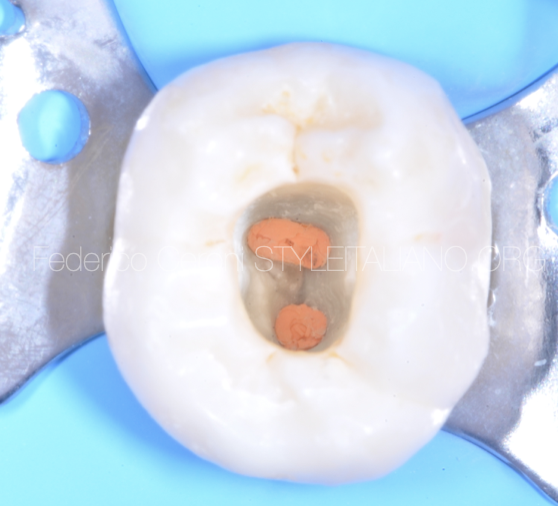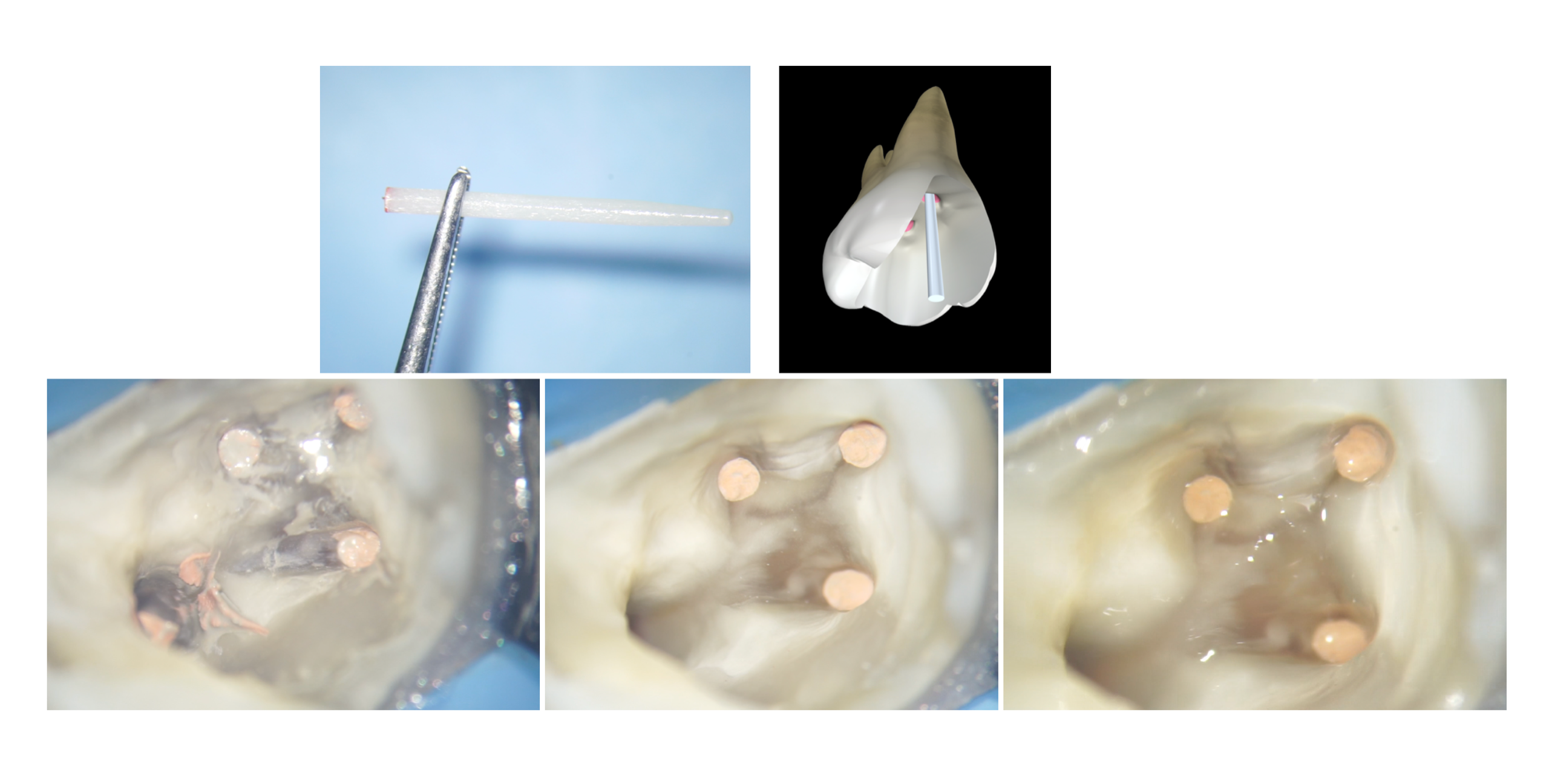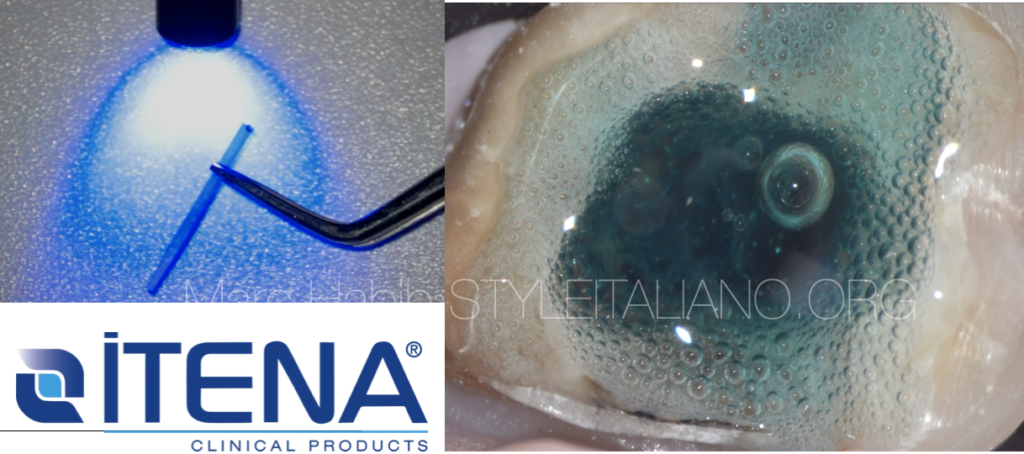
Root To Crown With Dentoclic Fiber Post Build Up Chapter 1: Molar Case
12/05/2022
Marc Habib
Warning: Undefined variable $post in /var/www/vhosts/styleitaliano-endodontics.org/endodontics.styleitaliano.org/wp-content/plugins/oxygen/component-framework/components/classes/code-block.class.php(133) : eval()'d code on line 2
Warning: Attempt to read property "ID" on null in /var/www/vhosts/styleitaliano-endodontics.org/endodontics.styleitaliano.org/wp-content/plugins/oxygen/component-framework/components/classes/code-block.class.php(133) : eval()'d code on line 2
Failing primary endodontic treatments are retreated to enhance the cleaning and shaping of the entire root canal space. Reshaping usually tends to eliminate more tooth structure from the canal walls. Furthermore endodontically treated teeth are already susceptible to mechanical failure due to de-roofing of the pulp chamber.
For all these reason special care should be taken while restoring endodontically treated molar and premolar teeth.
Conventional approach to restore fractured and retreated posterior teeth would be cast post and crown, the evolution of bonding material along with similar dentine mechanical properties of glass fiber post allows clinicians nowadays to core build up with fiber post instead of aggressive stiff metal cast post.
The purpose of this clinical article is highlight possible management of core build up with ITENA’s Corono-Radicular Restoration Kit
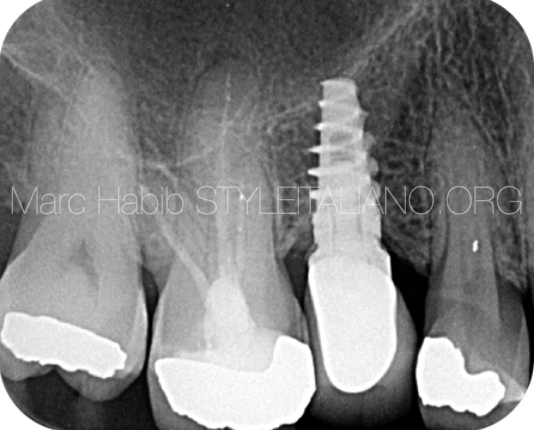
Fig. 1
Pre Operative X ray
Patient presented to the clinic with broken Cusp on tooth 16 with previous RCT and Amalgam filling
Primary root canal treatment dates for more than 20 years, with light density and short obturation filling material.
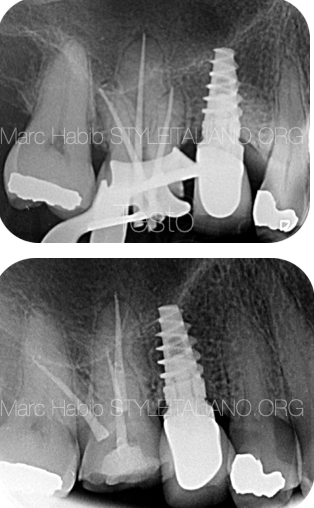
Fig. 2
Treatment planing to restore this maxillary first molar includes first a root canal retreatment.
X-rays during RC Retreatment : Master cones and Post Operative Xrays taken the day of the treatment.
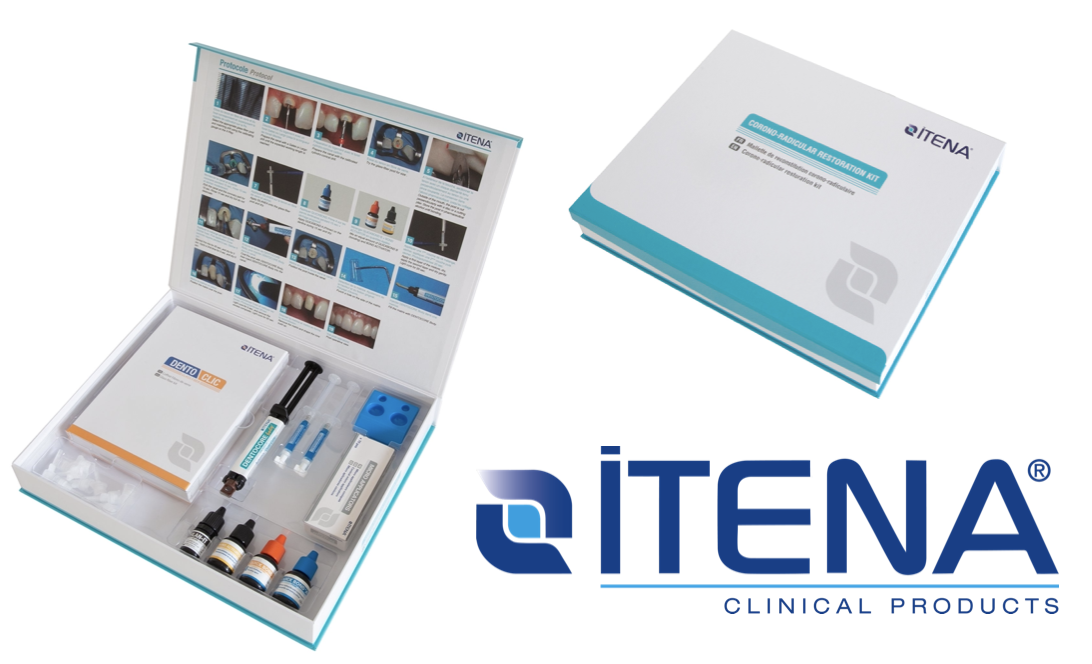
Fig. 3
Corono-radicular restoration kit ITENA CLINICAL
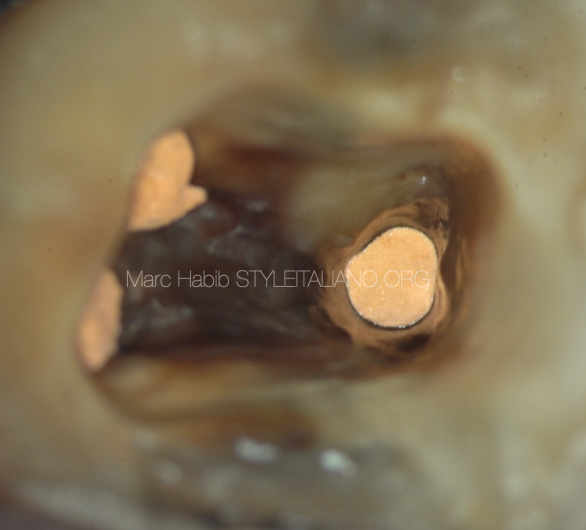
Fig. 4
Access cavity view after retreatment with focus on Palatal canal site for the fiber post reconstruction
Post Space preparation using DentoClic Purple drill Diameter 1.00mm
The primary goal is to achieve the best possible adaption of the fibre post to the canal walls with minimum alteration, in order preserve healthy dentine.
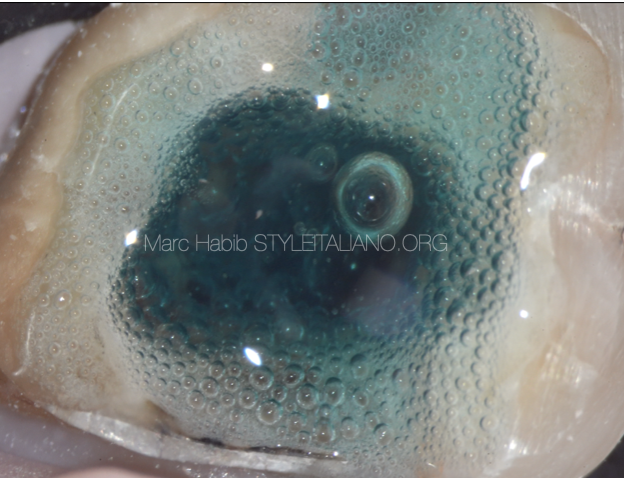
Fig. 5
Etching of the drilled canal space and access cavity walls
Fiber Post preparation
Access cavity and canal space Bonding:
The use of the bond activator and a dual-curing systems is indicated to guaranty a proper polymerization of the material inside to root canal space around the fiber post (~17500MPa to 21000MPa)having a modulus of elasticity very similar to that of dentin(~14000MPa to 18000MPa) trying to achieve a tooth–post– core monoblock.(Tay & Pashley 2007)
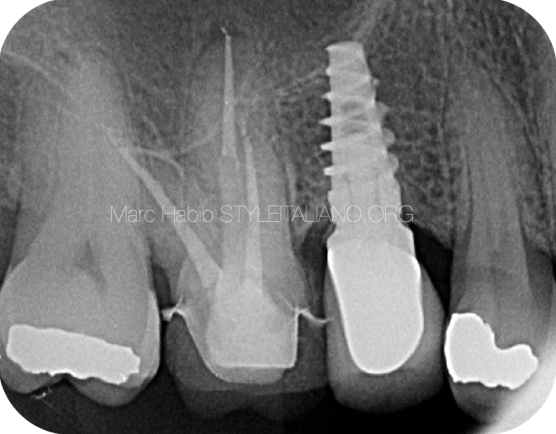
Fig. 6
Post core build up Xray with Dentoclic Purple Fiber Post and DentoCore Body
Continuity between root canal obturation and core build up without gaps or voids should always be reached for optimum results.
Due to fracture history and carious infiltration indirect full coverage crown was planed for tooth 16
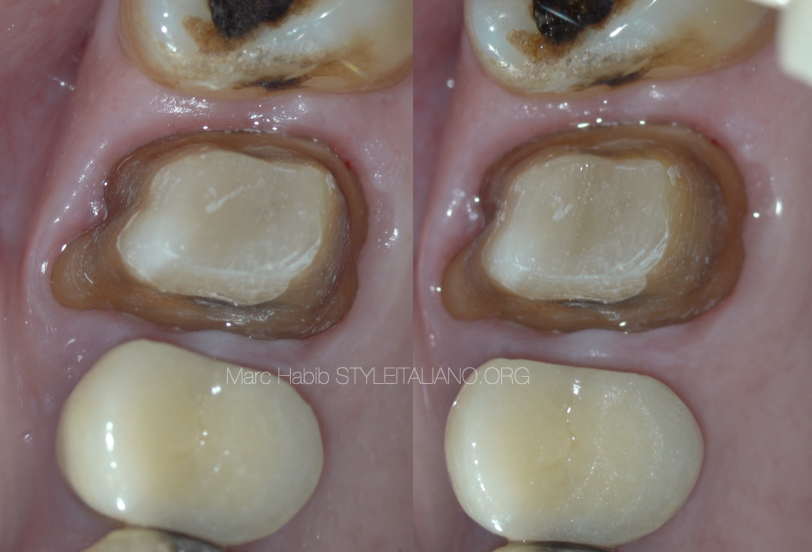
Fig. 7
Final Preparation with both views Buccal and Palatal showing residual dentine wall hight
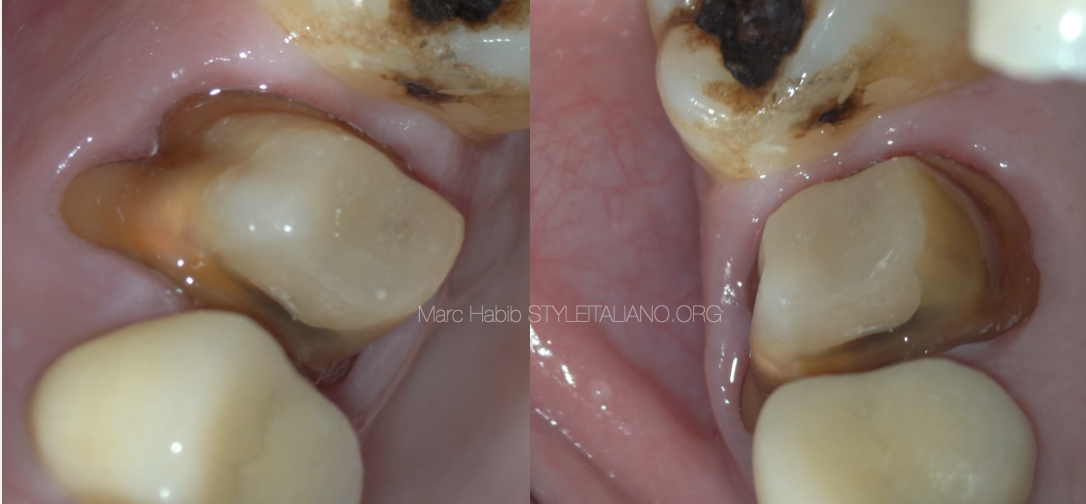
Fig. 8
Final Preparation with both side views Buccal and Palatal showing residual dentine wall hight
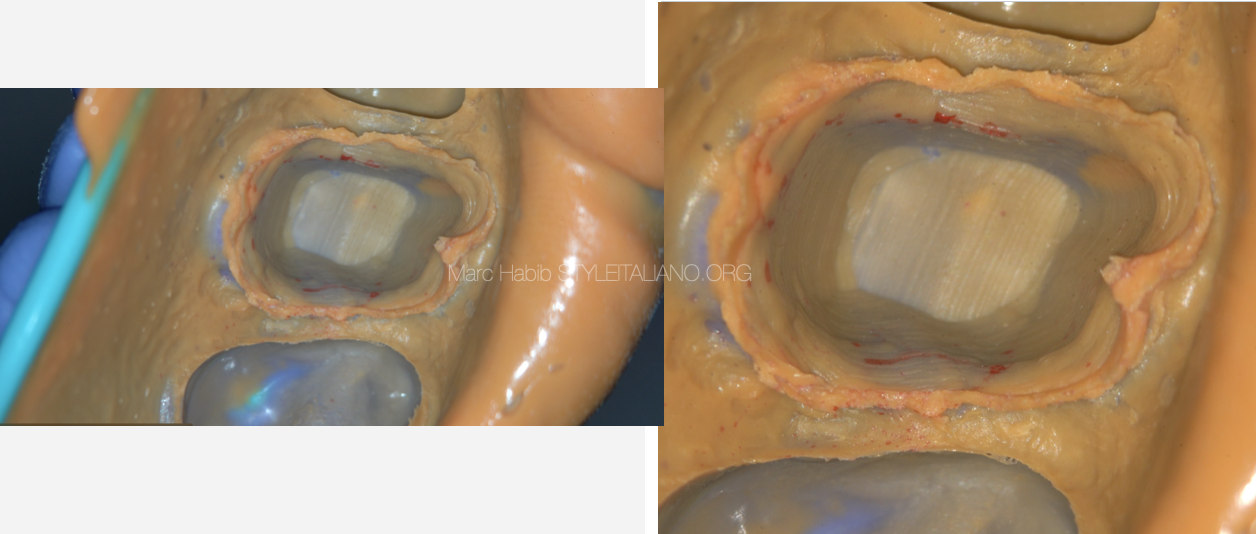
Fig. 9
Classic Light and Heavy silicone impression for crown fabrication
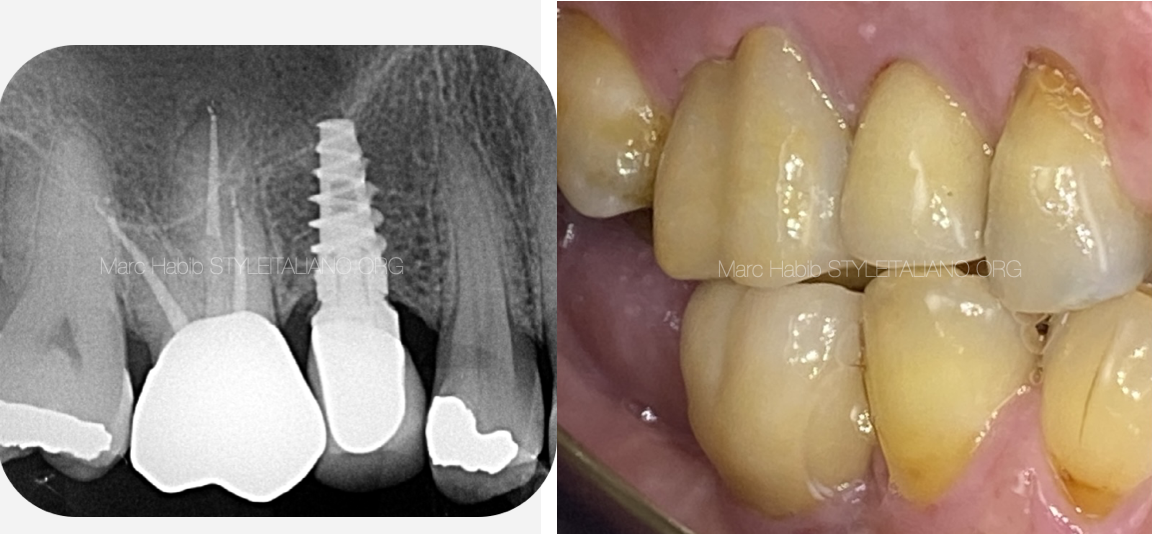
Fig. 10
Zirconia crown Cementation with bite and color check
Conclusions
Resin core build up material and fiber posts creates similar mechanical properties as dentine for the treated tooth core preventing further fractures with maximum preservation of tooth structure.
In summary, Itena advanced restorative products allows the clinician to use fiber post during core build up with ease making the tooth restoration more practical and contamination free since it is managed under rubber dam isolation used during the root canal treatment.
Bibliography
-Bhuva B, Giovarruscio M, Rahim N, Bitter K, Mannocci F. The restoration of root filled teeth: a review of theclinical literature. Int Endod J. 2021 Apr;54(4):509-535. doi: 10.1111/iej.13438. Epub 2021 Jan 5. PMID:33128279.
-Figueiredo FE, Martins-Filho PR, Faria-E-Silva AL. Do metal post-retained restorations result in more root fractures than fiber post-retained restorations? A systematic review and meta-analysis. J Endod. 2015 Mar;41(3):309-16. doi: 10.1016/j.joen.2014.10.006. Epub 2014 Nov 11. PMID: 25459568.
-Tay, F. R., & Pashley, D. H. (2007). Monoblocks in Root Canals: A Hypothetical or a Tangible Goal. Journal of Endodontics, 33(4), 391–398. doi:10.1016/j.joen.2006.10.00
- Scotti, N., Forniglia, A., Bergantin, E., Paolino, D. S., Pasqualini, D., & Berutti, E. (2013). Fibre post adaptation and bond strength in oval canals. International Endodontic Journal, 47(4), 366–372. doi:10.1111/iej.12156



